TrueSource enables data providers and data vendors to sell their datasets on their own terms in an automated fashion. Data buyers today are looking for an e-commerce-like automated data buying experience and don’t want to “contact sales” to learn more. Neither do you want to spend valuable time going back-and-forth with potential buyers, especially if you need to include your data engineers in the loop, only to learn they’re looking for something else or will ghost you.
This is why we created TrueSource, a white-labeled data storefront that sits inside your website (eg. datastore.dataprovider.com) and enables you to capture your buyers’ interest with an immediate effect. With TrueSource, your buyers will be able to discover, evaluate, and purchase your data or data services in an instant. You can think of us as Shopify for Data – we provide you with all the infrastructure needed for you to start selling your data on your own terms! And to show that we’re the most data provider friendly platform out there, we created a unique set of options for you to monetize your data.
How to Monetize Data?
There are many ways data providers can monetize data. First of all, it is important to note that TrueSource does not replace your existing channels for selling data: you can (and as a matter of fact should) keep your sales teams to deal with large data buyers, ie. the whales. They will have custom requirements that are best served today by custom solutions. Furthermore, when considering working with TrueSource, you should not delist your data products and data services from data marketplaces as they will continue to provide you with customers who would not find your data offerings on your website today. Think of TrueSource as an augmented sales channel for your data: but the one that is most strategic for you in the long run, as you have full control over the process and pricing, including complete user analytics and purchase history.
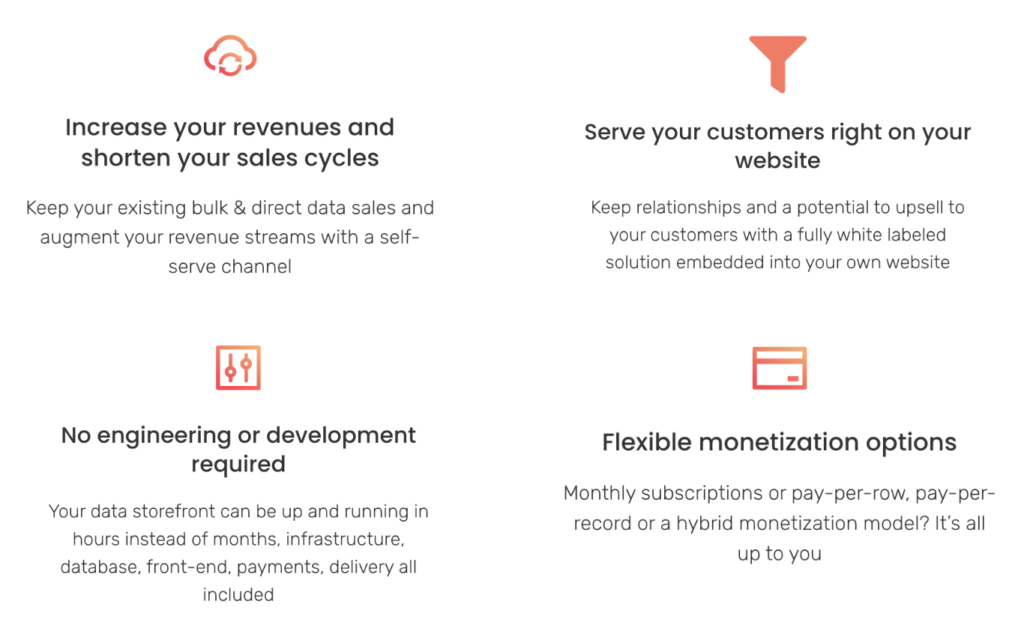
1. Sell Data as a One-Time Purchase
One-time payment provides you the opportunity to charge a one-time fee for your buyers to access all of your data. Buyers are given full access without an option for a time limitation in this monetization option.
Potential buyers are able to preview a seller-determined portion of the dataset which is set to 7 rows by default – the rest of the dataset is only made visible after online payment by the buyers. After paying for access, registered users can filter and search the complete dataset and transfer the data to their selected destinations. Transfer limits can be set by data providers.
This payment option is ideal for fairly static datasets that are valuable for a fairly short period of time and there is an existing trust between buyers and sellers through a vetted relationship.
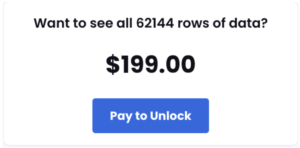
2. Monthly Subscription
Monthly subscriptions provide an opportunity for data providers to charge their customers for data access on a monthly basis. Data consumers, after having subscribed to the data, will be charged and billed automatically by TrueSource. Data providers will see their active subscribers and revenues on their dashboard.
Potential buyers are able to preview a seller-determined portion of the dataset which is set to 7 rows by default – the rest of the dataset is only made visible to users with a valid subscription. Users with a valid subscription can filter and search the complete dataset and download or get the data delivered the data to their selected destinations. Transfer limits can be set by data providers.
Monthly subscription is currently available with one pricing option for all data consumers, although one data provider can have multiple data products with different subscription prices.
This monetization option is ideal for dynamic datasets that are required by data consumers on a regular basis.
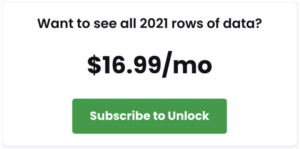
3. Per-row or Per-record Monetization
In the per-row or per-record monetization option data consumers are given the opportunity to access and filter the full dataset on screen but transferring data is only possible after successful payment. As data consumers are filtering through the data on TrueSource’s self-serve interface, access fee (price) is dynamically updated based on the number of rows or records selected.
After having completed online payment based on the number of rows or records selected, data consumers are able to transfer the data to their selected destinations. Transfer limits can be set by data providers.
Per-row or per-record monetization is currently available with one price per row or record within one data product, but data providers can create multiple data products with different prices.
Per-row or per-record monetization is ideal for larger datasets that consumers will heavily filter before purchasing.
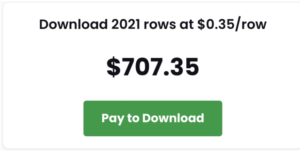
3b. Volume-based tiered pricing
Volume-based tiered pricing is an alternative version of the per-row or per-record monetization method. In the volume-based tiered pricing monetization option, data consumers are given the opportunity to access and filter the full dataset on screen but transferring data is only possible after successful payment.
As data consumers are filtering through the data on TrueSource’s self-serve interface, access fee (price) is dynamically updated based on the number of rows or records selected. Data sellers are given the option to set a dynamic price per-row or per-record based on the volume of data purchased. To illustrate this, let us provide an example: purchasing 1-1000 rows may cost $10 per row or record, while purchasing 1001-10,000 rows or records may be priced at $2 per row or record, etc. Pricing and tiers are freely determined by the data seller.
After having completed online payment based on the number of rows or records selected, data consumers are able to transfer the data to their selected destinations. Transfer limits can be set by data providers.
Volume-based tiered pricing is ideal for larger datasets where some consumers purchase smaller quantities of data, while others purchase more.
4. Premium Columns
Premium columns is a monetization option that can be combined with any of the above monetization strategies. Its primary purpose is to provide a tiered pricing within an existing data product. Some of the columns in the data product are available for viewing and transferring for the one-time purchase or subscription, while the premium columns, the most valuable records in the dataset, will only be available after another payment.
To provide an example of a use case for this data monetization strategy, consider a leads contact dataset, where the company names, decision maker names, geographies, and email addresses are treated as the “basic data product”, but the most valuable column, the decision makers’ phone number will only be available after completing a specific payment.
Premium columns is the ideal pricing strategy for datasets that have columns and records with different value – and can be used by different data consumers in different ways. If you use this pricing model to monetize data, you will not need to create individual data products for specific use cases but can let your data purchaser pick and choose the columns they want to pay for,
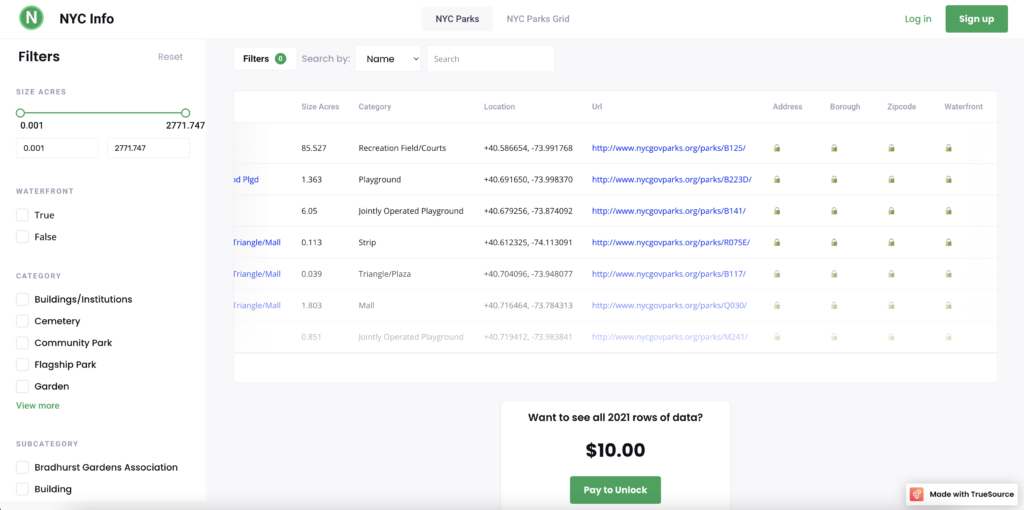
5. Customized hybrid monetization
TrueSource’s unique customized monetization option empowers data providers to create their own personalized monetization methods. In summary, data providers can set up any number of combinations of all other monetization strategies listed above.
An example for this monetization strategy:
Data consumers can freely access 1,000 rows or records from the dataset but will need to create an account to see more or transfer any data. Transferring over 1,000 rows or records will be limited to having a paid monthly subscription. Some columns in the dataset will only be available to higher-tier subscribers and remain hidden to all other users. On top of this, the most valuable (eg. freshest) records will only be accessible on a per row or per record basis to data consumers at a price set by the data provider..
These hybrid and highly customizable monetization options are ideal for frequently refreshed data with multiple use cases, ie. where different buyer personas will find different parts of the same dataset useful. As an alternative to choosing this monetization strategy, data providers can set up multiple data products marketed to the different buyer personas in a different way.
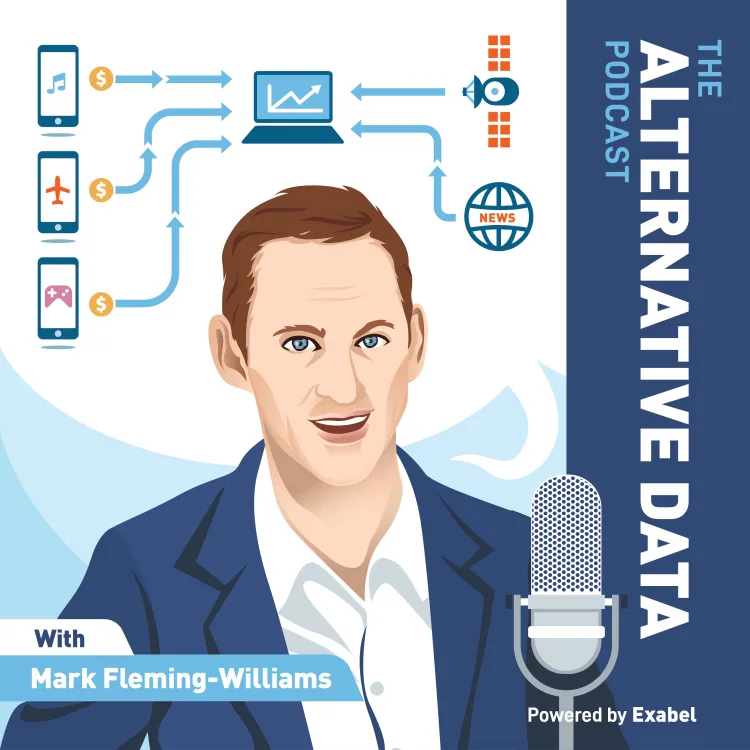

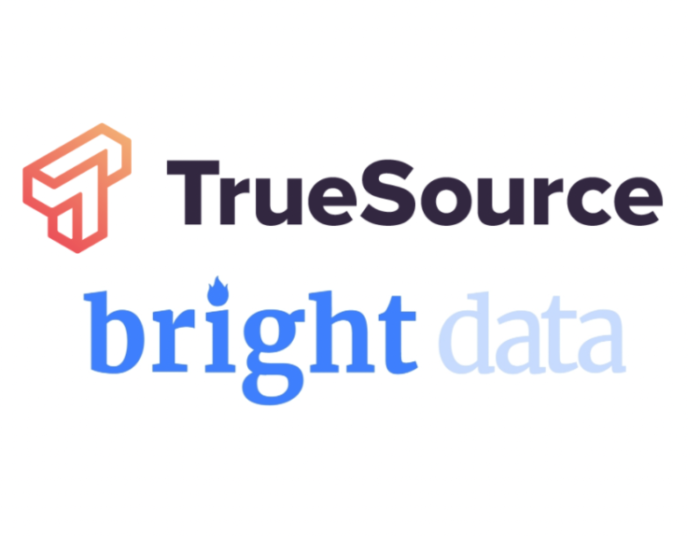
One Response
Very clear website , regards for this post.